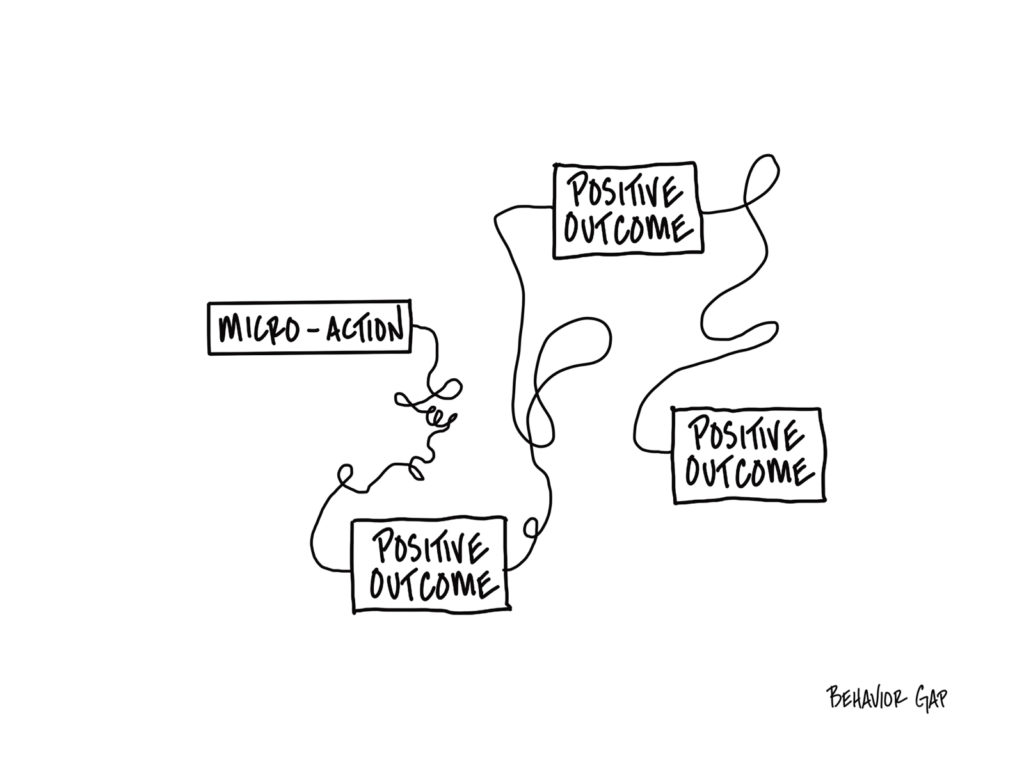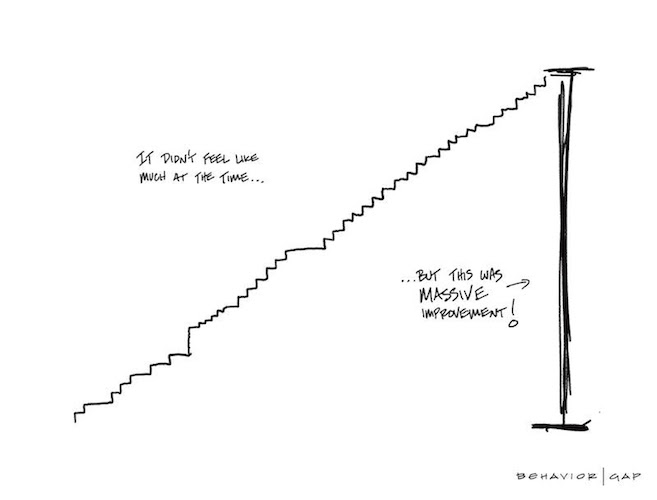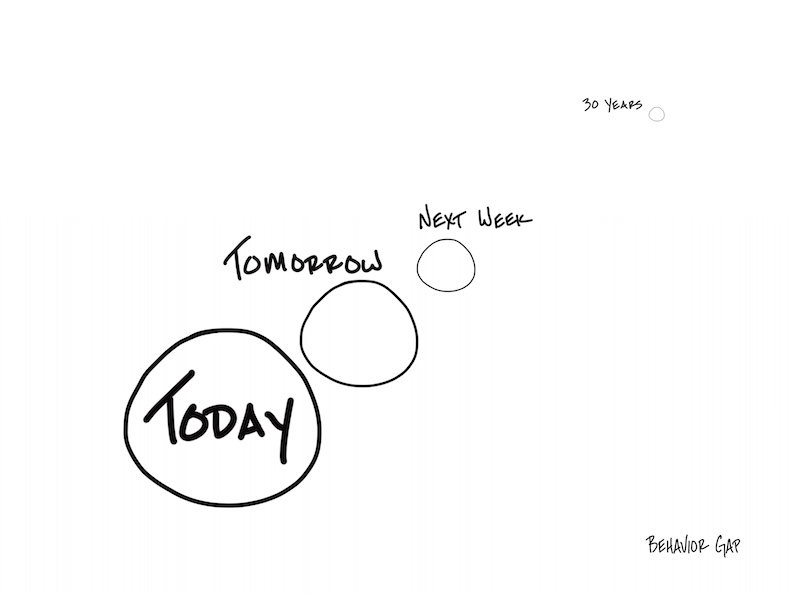Details Are Part of Our Difference
Embracing the Evidence at Anheuser-Busch – Mid 1980s
529 Best Practices
David Booth on How to Choose an Advisor
The One Minute Audio Clip You Need to Hear
Tag: Carl Richards
Image of the Month

When tackling big, audacious goals, you don’t need big, audacious actions. All you need is the contagious magic of micro-actions.
Let me give you an example.
When I travel, I often don’t feel like exercising, even though I know I’ll feel way better if I
do. So, in the morning, I don’t commit to a program to lose 12 pounds in twelve days or promise myself to run for 40 minutes. I just put on my gym clothes.
That’s it.
And then, since my gym clothes are on, I almost always decide to just walk to the gym and take a look.
What happens next is what almost always happens when I step into a gym: I see the bikes and think, “I bet it will feel good to get on one of those for a few minutes.” So I do.
And other exercises naturally follow that.
After I exercise, I think, “Man, it would feel great to stretch,” so I do that, too. And then, since I’m on a roll, I decide to eat a healthy breakfast instead of sugary garbage. Later at work, I’m extra productive since my body feels great.
See what I mean about contagious?
There’s a reason 80% of New Year’s Resolutions fail. The problem isn’t the goals, it’s the way we go about trying to tackle them. We try to go big and burn out, forgetting that “slow and steady wins the race.”
The magic here is in breaking down big, hard, sometimes even scary goals into attainable pieces. Find something small and attainable you can do, start there, and let the contagious magic of micro-actions do the rest.
Can You Imagine Your Future Self?
One of the big problems with setting goals is that we’re really bad at imagining our future selves. Remember what you imagined you’d be as an adult when you were a kid? I’m guessing there are some gaps between that dream and your current reality.
In the same way, there will be gaps between your current reality and your future self. And that’s partially because when we talk about goals, we’re often talking about long time frames. Consider retirement, for example. That could be upwards of 20 or 30 years from now. You can’t even imagine yourself at that age, let alone plan for it. That’s your parents, not you!
When we start talking about our distant future self, it’s easy to rationalize the decision to not do anything. Something 30 years down the road sounds an awful lot like something that can be started tomorrow.
In fact, our future self can often feel like some other annoying person constantly stealing heaps of fun from our current self. You may feel like you’re still 30, but if you just celebrated (or mourned) turning 60, it’s time to get real. Our future self will be here faster than we think. So how do we vividly connect with our future self to make better decisions today? Listen to the latest episode of TLV and consider writing a letter to your future self here.
The Magic of Incremental Change

HIG friend, podcast guest, and NYT columnist, Carl Richards, shared the following story about how incremental change adds up if you take the long view. Keep reading for the story behind the sketch.
The Magic of Incremental Change
Back when I lived in Las Vegas, I used to ride road bikes with a semi-competitive group of riders. I remember when I first joined the group, it felt like a big victory if I could just keep up with them for the first 15 minutes. After a while, that became the first half-hour. Then an hour. One day, almost without even noticing it, I was suddenly able to stick with the pack for the entire ride.
It felt sudden at the time, but of course, it wasn’t. And although I was surprised, nobody else was, because they had all seen it before with other riders or experienced it themselves.
This is the sneaky power of incremental change.
Each day, you make a small improvement. Then, that becomes the new normal, and you get used to it. You make a small improvement again, and then that becomes the new normal. This happens over and over, slowly but surely. We barely notice we are getting closer to our goal, and then (again, seemingly “all of a sudden”) we’re there!
I didn’t feel a lot faster because I wasn’t a lot faster… compared to yesterday or even last week. In fact, I was just a little faster than I was last month. But month after month, ride after ride, it all added up. All those little bits of “faster” started to compound on top of one another.
Of course, this doesn’t just apply to riding bikes. I’ve had times in my career where I wondered if I was accomplishing anything. I specifically recall a time when I was working remotely for a large company. I got very little feedback on my work and was largely left alone. I loved the independence, but I also struggled because I had no idea if what I was doing was valued by the people I worked for.
To deal with this struggle, I started reviewing each week and noting what I had done. It felt weird at first because I didn’t want it to be seen as taking credit for things, but as the weeks added up and the list got longer, it felt good. I was doing stuff, and that stuff was making a difference, for sure.
No one else needed to see the list. It still felt good. It helped me to see, in real-time, how incremental changes add up.
If you build a process of reflecting every quarter, month, and year, you’ll never feel like you’re not accomplishing anything again. And while that may spoil some of the surprise of suddenly and unexpectedly arriving at your goal one day, I promise it will be worth it to feel much better along the way.
-Carl Richards


